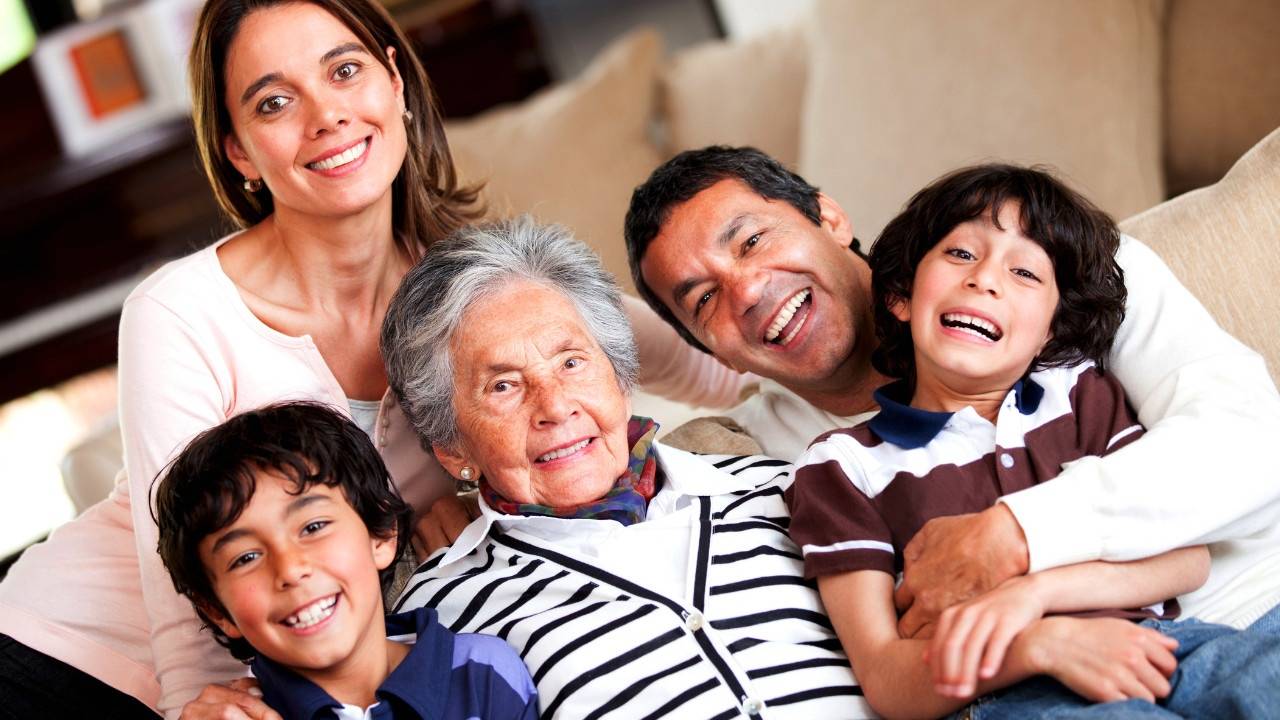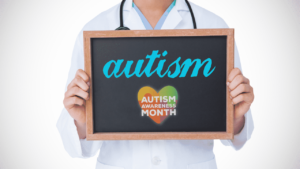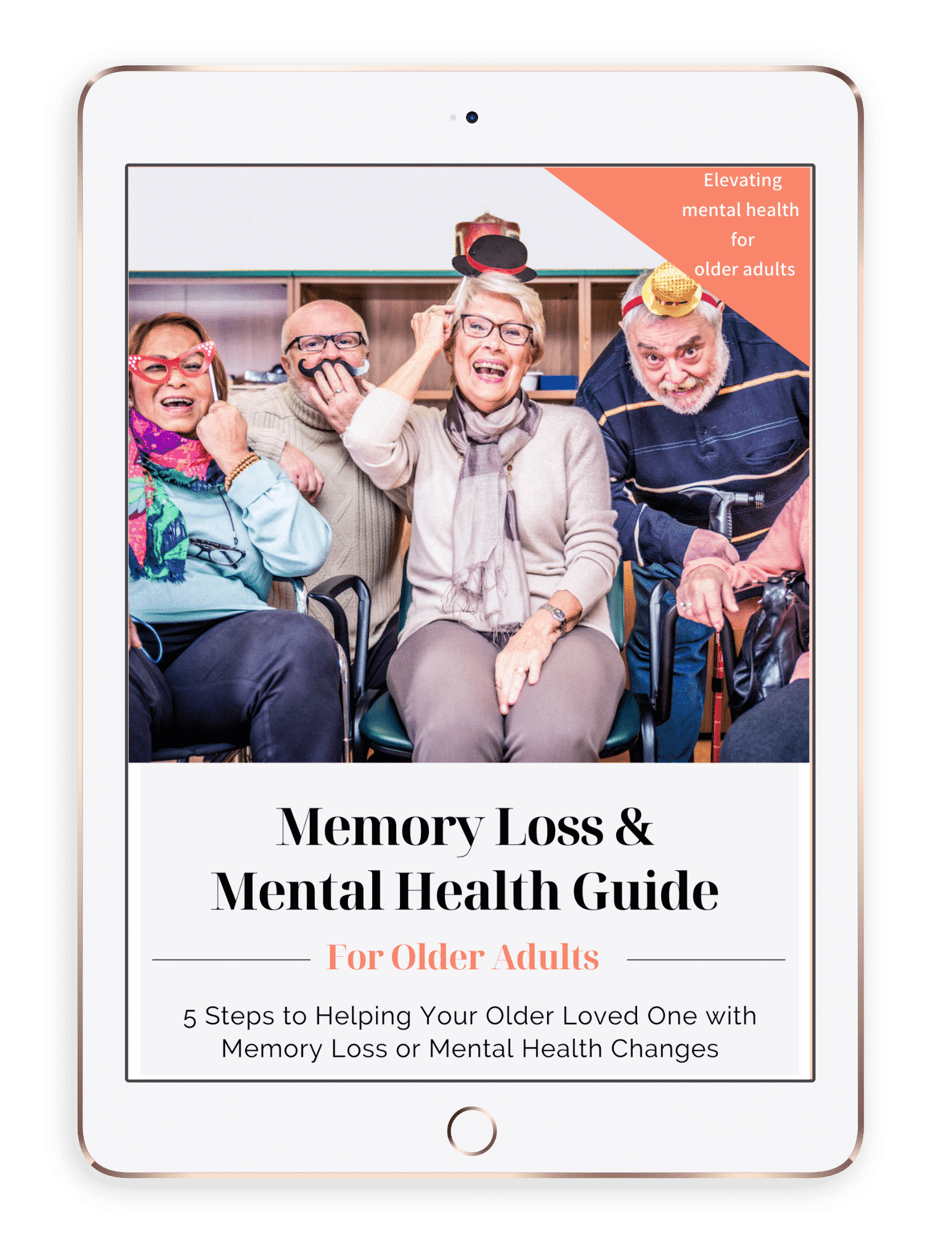Understanding the role transitions along the caregiver’s journey will help you to gain clarity with the common struggles and what you can do about them.
Knowing that you’re not alone and having tools to manage challenges that may arise helps will help you along the caregiver’s journey and reduce stress and feelings of guilt and overwhelm.
6 Role Transitions Along the Caregiver’s Journey
There is no timeline for these role transitions along the caregiver’s journey. Some families receive a diagnosis of a terminal medical condition and move through these roles at lightning speed, and other families and illnesses (e.g., dementia disorders) can experience a drawing out of these roles.
Role 1: The Pre-Caregiver
In this stage both the older adult and the person who will become the primary caregiver are living mutually autonomous lives. There’s little to no concern about the health of the older adult and little to no request for assistance. This stage is relevant in the family caregiving journey because each family comes into caregiving with their own unique family dynamics, histories, roles, etc. The family dynamics that existed prior to caregiving often influence the course of caregiving.
Illness/ Functional Needs: Not yet caregiving- Two Autonomous Adults, living side by side
The struggle: if you lived in a family with a history of secrets and betrayal, you may be suspicious or skeptical of the information you receive once you become a family caregiver. If you lived in a family in which people were very private and didn’t talk about illness or challenges, you might worry you won’t get all of the information you need to provide care down the road. If you lived in a family where there were long periods of estrangement or abandonment, you may be more likely to experience resentment down the road as a caregiver.
The goal in this stage is to take stock of your family history, your role in the family, and to prioritize your health and wellness, as well as the health and wellness of your relationship with your older loved one, especially if you anticipate helping them in the future.
Role 2: The Ambiguous Caregiver
In this stage, the older adult has a medical or mental health condition that is impairing aspects of their lives and creating some level of need for assistance. In this stage, the older adult may be in risky situations, but still have the capacity to make decisions for themselves in many aspects of their lives.
Illness/ Functional Needs: Older adult needs assistance with instrumental Activities of Daily Living (IADLs= finances, driving, shopping, cooking, etc)
The struggle: There is often confusion about roles in the family and often a lack of clarity about illness. This creates a sense of ambiguity for both the older adult and the family. There is a struggle with understanding roles, clarity about illness, and managing complex dilemmas and binds around safety versus autonomy. How do you step in with respect and honoring your loved one’s dignity and autonomy? For example:
Role Confusion:
- In this stage family members may have the sense of “now I’m helping, now I’m not.” It’s common in this stage for family caregivers not to identify as a caregiver per se, making statements like: “I’m not helping with bathing or grooming, so I’m not really a caregiver” and might say, “I’m not a caregiver. Am I?”
Dilemmas and Binds
- My loved one is still living independently, but making costly mistakes with their money and I worry they’ll be taken advantage of. When do we take over?
- My loved one is still driving, but we’re worried. If we take away the keys they’ll be isolated and alone. Driving is their access to the world. Demanding that they stop driving will rupture our relationship. If we let them keep driving, we worry that they will get lost or get into an accident. What do we do?
Uncertainty about Illness:
- If the older adult has a dementia disorder and the family doesn’t understand dementia, the family may say, “it’s hard to know where the personality ends and the illness begins” or “she’s faking it, she could do it if she wants to.”
The goal: When there is confusion and uncertainty in this stage, it’s more common to experience guilt, shame, frustration, stress, and overwhelm. Thus, the goal in this stage is to gain clarity about the illness and the prognosis of illness that the older adult has as well as to gain clarity about the caregiver’s role. This clarity will help the family more accurately assess and manage risky situations.
Role 3: The Caregiver
In this stage, it is clear that the family member is indeed the caregiver. At this point, the caregiver is helping with the more intimate tasks like grooming, dressing, toileting, attending medical appointments, etc. There is often no denying that you are a caregiver.
Illness/ Functional Needs: Older Adult Needs Assistance with Activities of Daily Living and Instrumental Activities of Daily Living (ADLs and IADLs)
The struggle: In this stage, the older adult often needs more care than one person can provide, leading to overwhelm.
The goal in this stage is to broaden your circle of support, enlist formal (paid) caregivers. It’s also important to find meaning and benefit in what you are providing as a caregiver, and find ways to value what you are doing as a caregiver.
Role 4: The Steward
In this stage, the older adult is nearing the end of their life and may be receiving hospice care. The older adult may not be communicating any longer. The caregiver, at this point, becomes the steward of the relationship, carrying the relationship, and expressing and advocating for their loved one’s wishes.
Illness/ Functional Needs: Older Adult is at end of life and largely unable to engage in care or the relationship
The struggle: As your loved one nears the end of their life, you will be experiencing anticipatory grief and will be reflecting on missed opportunities with your loved one, perceived “mistakes” you made in caregiving, and likely question your decisions as a health proxy, etc.
The goal: Early in the caregiving journey the goal was to pursue optimal health and quality of life in the midst of illness. The goal in this stage, however, is to prepare yourself and your loved one for an optimal end of life by allowing yourself to simultaneously grieve and advocate for your loved one, and ease your loved one’s suffering. You will need support and a sense of security within yourself.
Role 5: The Bereaved
In this fifth stage, your loved one has died and you are grieving the loss of them and of your role as a caregiver.The more complex the caregiving dynamics and relationship, the more complex the grief and bereavement process. The better able you are to move through the previous stages of caregiving, the healthier the grieving process.
The struggle: This stage may have some unexpected challenges in that your position as “primary caregiver” may be replaced by another family member who is assigned executor of the will. You may be “de-throned” so to speak in the family, or move the second chair. While it can be a relief to not have the stress of executing a last will and testament, the immediate shift to your role in the family can take an emotional toll.
The Goal: Move through grief by acknowledging it and feeling it. Reflect on memories with your loved one, the meaning and value of your role as a caregiver. Try to support the executor of the will as you wished to have been supported as a caregiver.
Role 6: The Re-Builder
In this final stage of the caregiver’s journey, there is suddenly more space in your life. You are no longer a caregiver, and you may have lost other roles as well. You may no longer be a spouse or an adult child, you may no longer be working, you may have stopped volunteering, or withdrawn from friendships or church.
The struggle: Many former caregivers describe having more space in their life and experiencing an “emptiness” or void. I’ve heard caregivers describe this as, “it’s so quiet in the afternoons” or “when do I stop wearing my wedding ring” to mark the transition of roles.
The goal: To re-engage with life and to mindfully rebuild your life and roles with activities and relationships that are meaningful to you.
References:
The role transitions along the caregiver’s journey was inspired by:
- Sarah Quall’s Caregiver Family Therapy: Qualls, S. H. & Williams, A. A. (2013). Caregiver Family Therapy: Empowering Families to Meet the Challenges of Aging. Washington, D. C.: American Psychological Association



